"Object 187" - one of the most mysterious tanks produced by the military industry of the USSR. Its development took place in the 90s of the last century as part of the improvement of the T-72B tank. The T-90 model was developed almost in parallel. Later, it became a legend in Russian tank building. The fate of the tank "Object 187" was less colorful. Today we will get acquainted with the history of its development and tactical and technical characteristics.
Development
The development of an experimental main battle tank was entrusted to the Ural Design Bureau of Transport Engineering. It was produced under the theme "Improvement of the T-72B." This topic was opened on June 19, 1985 by the Council of Ministers of the Soviet Union. The development of the tank was carried out almost simultaneously with the work on the machine name T-90. At that time it was called "Object 188". Below we will dwell on this technique separately and find out how much the T-90 tank weighs, how it is armed, what it is equipped with, and so on.
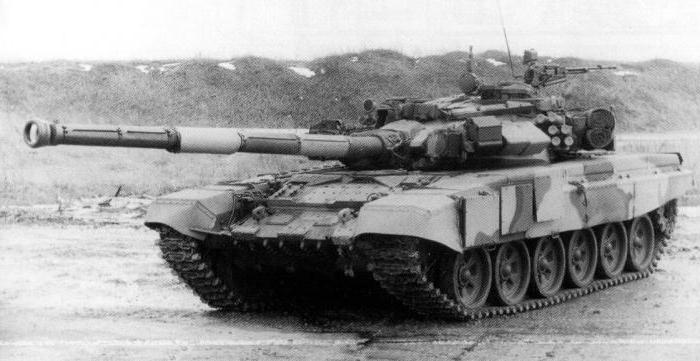
Model 187 differed from the 188th in that it was a completely initiative development of the Ural Design Bureau. At that time, it could afford such liberties, relying on the support of the Ural Car-Building Plant (UVZ) as a potential producer of “Object 187”. Both tanks were a further development of the T-72 combat vehicle, which was outdated at that time. However, in the design of the technique with which we are getting to know you, the team of engineers led by V. Potkin laid down deeper changes in comparison with the original model. The direct head of the tank development activities was A. Schelgachev, deputy chief designer of the bureau.
Exterior
The radical decision of the engineers was the rejection of the revolutionary case design, which was imposed on Tagil Design Bureau back in the late 1970s. The layout of the tank "Object 187" has undergone slight decompression, which positively affected not only ergonomics, but also the quality of protection of the upper frontal part (VLD) of the hull. Due to the increase in the length of the bow, it became possible to leave the place of the driver (driver) in the depths of the body. Thus, the shafts of observation devices began to exit through the roof, and not through the upper frontal part, as on the T-64 and its "relatives". So disappeared the very weakened "neckline", which has always been the subject of debate. The angle of reservation has become more rational for protecting the tank from modern BPS (armor-piercing subcaliber shells).
Machines created as part of the modernization of the T-72 tank received a tower of a new design. Traditional casting was abandoned in favor of welding individual elements made of medium-hard sheet metal. The design of the towers and the technology of its production were developed jointly by OJSC NII Steel, Uralvagonzavod and UKBTM. Almost simultaneously, welded towers were developed for UKBTM and KHKBT (T-80 UD). The tower of the tank "Object 187" differed from all the others in enlarged dimensions, especially at the stern. A major contribution to the development of towers and their protection was made by Y. Kondratiev.
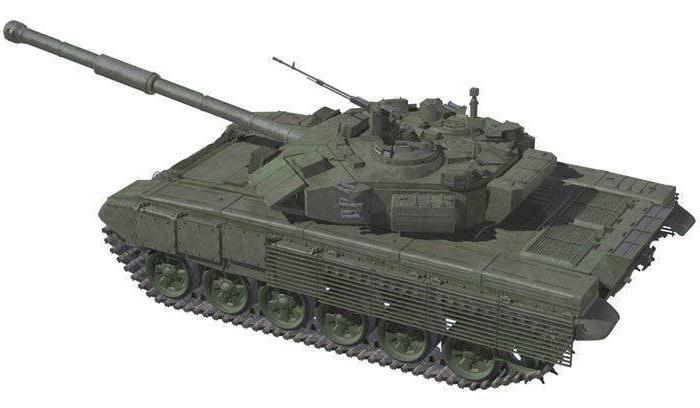
The armor of the tank was supplemented by a new KDZ (dynamic defense complex), which became the prototype of the currently used complex "Relic". According to some data, the reliability of which is not confirmed, KDZ for model 187 was called "Malachite". Protective circuits were supplemented by lattice screens and KOEP (complex of electronic-optical protection) "Curtain" of Ukrainian production.
“Object 187”: weapons
The main weapon of the tank was a 125-mm gun, called 2A66, or D-91T. It was developed in the city of Sverdlovsk, in the famous Petrovsky artillery design bureau of plant No. 9. Together with this gun, an updated BPS 3BM-39 9 Anker was designed, the elongation coefficient of which was twenty. It was made in the form of a uranium OBPS monoblock with a detachable tray. WU projectile consisted of two coils: caliber and sub-caliber, which was made of composite materials and had an x-shaped section. The plumage was made of light alloys on a large scale, which was a smaller caliber.
The development of a new shot involved NIMI (Scientific Research Institute of Engineering). Testing of guns and shots was carried out mainly at the NTIIM training ground (Nizhny Tagil Institute of Metal Testing). Externally, the new gun could be recognized by the presence of a muzzle brake. DT received a single-chamber design, the effectiveness of which was reduced. It served rather for the removal of gases than for leveling the return. Later, on some samples, an updated 2A46M gun (D-81TM) was installed.
The tank was equipped with the most modern fire control system (SLA) at that time. In the armies of potential opponents, something similar began to appear only at the end of the 2000s. The system was based on elements 1A45. In the adaptation of this complex to samples 187 and 188, Yu. Neugebauer and V. Bystritsky were especially distinguished. One of the innovative solutions first implemented in Soviet tank construction was the use of micro-connectors in electrical control circuits. This allowed to significantly reduce the volume and weight of cable routes. In this direction, a special merit also belongs to Yuri Neugebauer.
“Object 187”: engine and chassis
Several types of engines and transmissions, including gas turbine engines, were tested on the prototype tanks. According to the test results, the X-shaped monoblock model A-85-2, manufactured in Chelyabinsk, was recognized as the most suitable power plant. Its power was 1200 hp. Due to the overall features of the motor, it was located in the MTO according to the longitudinal scheme. Similarly, the engine was housed in the V-2 and T-34. This arrangement, among other things, simplified the docking of the motor with hydrostatic transmission.
The exhaust pipes were originally located in the 187 model with an X-shaped power unit outboard. The exhaust was later aft. The development of the engine compartment of the tank was carried out by E. Babylon, V. Kharlov, Yu. Ivanov and O. Kuraksa. The chassis of the car had a parallel RMSh and a metal treadmill.
The caterpillar of the tank in question was different from the caterpillar of the T-90 model. First of all, the difference was expressed in the shape and location of the lugs. If you connect the extreme points of the lugs of the machine 187 with a line, you get an oval, and in the case of the tank 188 - a rectangle. In addition, the "Object 187" received a solid ridge, and its "relative" - stapled. Links of the tape were cast with subsequent machining. Of course, this method is more productive, in comparison with the simple stamping used in the production of links for the T-90 model. On the first samples of the machine, the 1st and 6th rollers were equipped with paddle hydraulic shock absorbers. Later they began to be installed also on the second skating rink.
Series
Cars were built in pairs in three series. Each new one was significantly different from the previous one. These changes clearly illustrated the evolution of phased development of mechanisms, components, assemblies and systems. The machines inside the series also had some differences, but they were insignificant.
Samples No. 1 and No. 2
These samples were closest to the future T-90, with the exception of the hull. At No. 1, a modified Chelyabinsk diesel engine with a V-shaped arrangement of cylinders, called 84MS, was used as a power unit. He developed a capacity of 840 liters. with. Later, this power plant almost in the same form migrated to the "Object 188". After the test cycle, the 1st sample was disassembled and corrected. Then his body became the basis for the manufacture of the third sample.
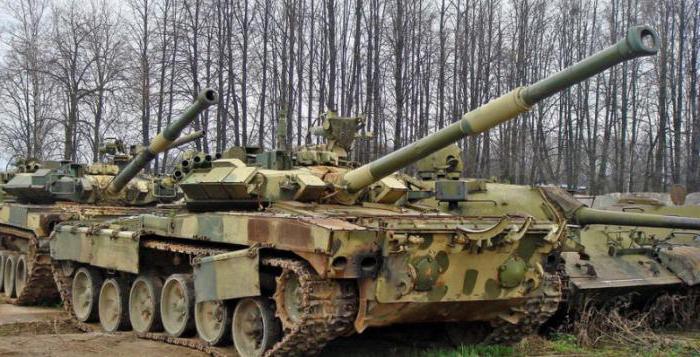
As for model number 2, it was already equipped with a 1000-horsepower diesel power unit with a V-shaped cylinder arrangement and turbocharging. This engine was developed in Barnaul and bore the name KD-34, or B-85. In this form, the tank successfully passed the test cycle in Turkmenistan. He endured dustiness and high temperatures. Later, the car returned to Nizhny Tagil and was retrofitted. Ultimately, she was shot at the NTIIM training ground in the village of Staratel. With the real impact of modern (at that time) anti-tank weapons, the car showed an outstanding level of protection. Later, the shot sample was disposed of.
Sample No. 3
Since the third sample was originally intended for “barbaric” tests related to testing its resistance to destructive factors, it was never fully equipped. Unlike the first two instances, which had a cast tower that was classic for tanks of the T-72 type, he received a new tower made of rolled 40-mm armor plates. The latter were interconnected by welding. The geometry of the turret of sample No. 3 was similar to the modern turrets of the T-90 tank in modifications "C", "SA" and "A". Actually, with this model the use of such towers began, including on the prototype of the same “Object 188”.
From the usual welded towers of the T-90 tank, the turret of sample No. 3 had a number of significant external differences: the shape of the cutting of welded joints and armored plates, the shape of the ejection pan (here it was round, not oval), the presence of a HLF in the back (and not in the car body). On the first three samples of the tank, the hull was made according to the classical scheme for tank construction of the USSR, with the only difference being that its bow was elongated, and the VLD had an even greater inclination angle. At the same time, the driver’s workplace seemed to be pushed into the case. Three viewing devices were mounted directly on the sunroof. So, the designers managed to get rid of the “Achilles heel” of Soviet combat vehicles (T-64, T-72 and T-80) - a weakened zone in the center of the VLD.
In the third prototype, as an experiment, the “native” MTO was replaced by the MTO T-80U with the GTD-1250 motor. Additionally, a hydraulic shock absorber was installed on the tank, or rather on its 5-track roller. With this arrangement, the car was tested in Nizhny Tagil and at the BTVT training ground in the suburbs. In addition, this sample has undergone comprehensive tests of PAZ in the Arzamas Nuclear Center.
Installing a turbine on a third prototype was a necessary step — an attempt to strengthen the tank’s position in the current political situation. This measure pursued two goals. The first is to knock out trump cards from the adherents of the turbines and show that Tagil has an almost ready tank with a gas turbine engine that was popular at that time. At the same time, this unit was more perfect in all respects except for the MTO borrowed from the T-80U. The second goal is to illustrate the fans of the gas turbine SU the superiority of new diesel engines with increased power. Not only theoretical calculations, but also tests showed a clear loss of turbine SUs for a number of important parameters.
Sample No. 4
The fourth sample received almost the same building that No. 3 had before its conversion into a turbine. Small changes affected the configuration of the welded tower - it increased in the stern and the midship. The weather sensor, which was installed at the rear of the turret, looked completely different from the usual TWO of the modern T-90 tank. TTX machines also differed from previous models. The main engine was the 1200-strong X-shaped unit model A-85-2. The fan cooling system traditional for the Nizhny Tagil machines received a pair of centrifugal fans located on the right and left sides of the center of the stern.
The exhaust pipes were located side by side. They went around the fenders and led the gases down under the stern. Thanks to the significantly elongated tract, the exhaust gases cooled well, and the heat dissipated, which reduced the thermal visibility of the machine to indicators of the general background.
Compared with the previous model, the location of the auxiliary power unit has changed here . The chassis also got some changes. The usual sloth with windows was replaced by a continuous one - without holes and cutouts. KDZ used on the first and third sample was replaced with a new design. DZ pop-up panels on the VLD were made of massive titanium plates. Later, when transferring the tank to the Kuban Museum, these panels were replaced with 30 mm steel sheets in order to prevent their loss. Thanks to the milling grooves, the sheets resembled real panels. The design was fastened in the CRD of the casing with four bolts.
Samples No. 5 and No. 6
The fifth and sixth samples received the most significant changes and became the best machines in the line. Their nose received even more impressive dimensions and a new shape. If the nose of the T-72 tank and the first versions of the model 187 externally resembled a chisel, then the nose of the last samples had a chisel shape. The naked body (without fenders) had a length of 7.2 m and a width of 2.17 m. Surveillance devices were moved from the hatch of the driver to the side of the tower. The tower itself has once again grown in size. Its length, excluding dynamic protection, was 3.12 m. The protection of the side projections of the tower became more thorough. A striking feature in the appearance of sample 187 was the extremely wide feed - there were no wider towers in the Soviet Union.
Like the fourth model, these cars received a new KDZ. However, the type of armor of the “Object 187” in the 5th and 6th configuration was different - titanium was replaced with armored steel. The configuration of the DZ containers, which are installed on the cheekbones of the tower, has been slightly modified. In the Contact-V complex, the active elements are installed by means of narrow covers at the ends of the blocks. In our case, the entire upper side of the block is a large removable cover. Unscrewing the four bolts, the tankers could gain access to any part of the block.
The aft of the tower was shielded by large aluminum bins of spare parts, and the side and aft projections of the hull were lattice screens. The latter are produced according to the technology developed at the NII Steel OJSC from an armor plate with a thickness of 4 mm. They were installed over the usual rubber screen. Since it was not possible to comply with the railway gauge in the presence of screens, they were completely dismantled during transportation.
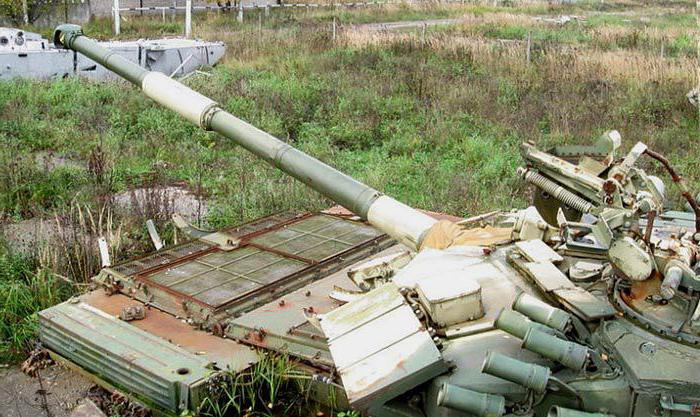
Machines No. 5 and No. 6 of the samples received the same engine (X-shaped A-85-2), but a different transmission. The fifth model was equipped with a traditional mechanical transmission, and the sixth - a more innovative GOP. Effective cooling of large volumes of air required a large area of radiators. To this end, O. Kuraksa insisted that the four windows of the radiator grilles (as in model No. 4) be combined into two larger windows. To save weight and ensure the operation of underwater driving equipment, the covers of the intake grilles were made of rubberized fabric, not metal, as on the T-72 and T-90 models.
Due to the fact that samples 5 and 6 had different transmissions, they get slightly different lattice windows. In particular, the left window of the fifth number received a hole for the filler cap. Perhaps this is the only difference between the appearance of these samples. The track rollers of these models could also be different (the fifth sample received new rollers similar in stamping form to rollers of the second BPMT model). However, during operation, their set could change. From the side, these samples can be easily recognized by the configuration of the boxes with APU units located at the stern of the right fenestrated shelf. Unlike samples No. 3 and 4, here they have a beveled feed. In the third sample, the box is completely rectangular, and in the fourth it has a reverse bevel.
Prospects
The Ural Design Bureau made a lot of efforts to ensure that this, of course, a worthy machine, entered the arsenal of the USSR. Nevertheless, despite the brilliant tests and the uniquely high potential (both combat and technical), the Ministry of Defense did not take the tank into service. Instead, the Defense Ministry preferred once again to give its preference to half measures and concentrate on fine-tuning the T-90 tank, whose performance characteristics were largely inferior to the “hero” of our article. This machine became a kind of symbiosis of the T-72B case and most systems of the 187 model. As a result, the machine, which was almost ready for serial production and very promising, gave way to a cheaper and easier one. A similar situation occurred with the projects of the tanks "Object 167M" and "Object 172M-2M", which were also ahead of their time, but were never allowed into the series.
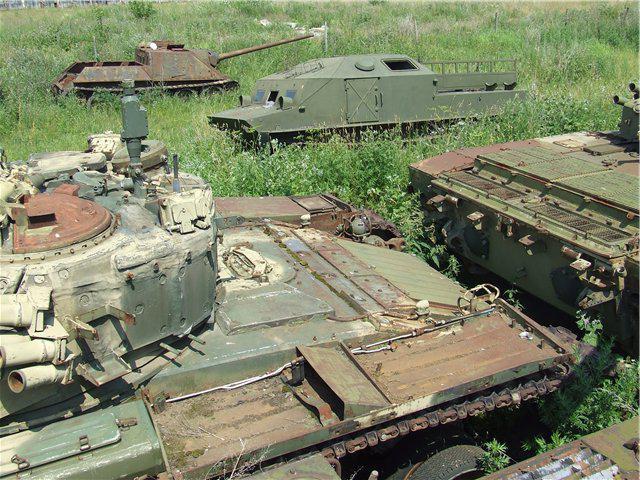
It is worth noting that, according to the idea of V. I. Potkin, the chief designer of “Object 187”, the tank was to become the basis for the development and creation of a whole family of modern and promising combat vehicles.
Current state of affairs
To date, 4 tanks have remained in the “living”: the 3rd, 4th, 5th and 6th samples. All of them are located in the Cuban Tank Museum and are far from in the best condition. Cars are understaffed and stolen. Metal scrapers stole the ZIP boxes made of aluminum, and even removed the MTO titanium roof from the turbine version. The Uralvagonzavod Museum has repeatedly asked its Cuban colleagues to transfer at least one copy of the tank for its restoration and demonstration in its complex, but all in vain. The Cubans motivated their refusal with considerations of secrecy. However, the museum currently plans to independently repair the tanks and present them in one of its exhibits.
Characteristics of Object 188
This tank is the most important person involved in the failed success of the “Object 187”, the review of which we conducted today, and it’s just the main Russian combat vehicle today, it will be interesting to get acquainted with its technical characteristics.
The layout of this machine is performed according to the classical scheme. The crew of the T-90 consists of 3 people. As in the case of sample 187, the body is made of welded sheets, and the frontal part is additionally strengthened by multilayer armor, which includes composite materials. The main instrument of the machine is a 125-mm gun, which is equipped with a stabilizer, a system for pumping out powder gases and a system that takes into account the deformation of the barrel. In addition, the tank is equipped with a Utes anti-aircraft gun and a coaxial machine gun.
The combat vehicle is equipped with a 4-stroke 12-cylinder diesel engine. The T-90 tank of later modifications received a more powerful engine with a turbocharger. This allowed to increase its capacity from 840 to 1000 liters. with. The new engine increased the maneuverability and speed of the T-90. The planetary transmission of the machine has 7 forward and one reverse gear.
For the protection of the tank meets multilayer armor and KDZ "Blind". Also, the machine uses a modern fire extinguishing system. Given the solid reservation and equipment, many are wondering how much the T-90 tank weighs. The car is not easy - 46-odd tons. Nevertheless, the power plant manages to accelerate it to 60 km / h along the highway and 50 - on arable land. The weak point of the Russian T-90 tank is the fact that its fuel tanks and ammunition are in the combat compartment and are not separated from the crew by partitions.